
Visit this site and use the arrow keys to help you decide which part of history you want to explore.
- Subject:
- History
- Social Studies
- Material Type:
- Activity/Lab
- Homework/Assignment
- Author:
- The British Museum
- Date Added:
- 03/25/2020

Visit this site and use the arrow keys to help you decide which part of history you want to explore.

This problem requires a comparison of rates where one is given in terms of unit rates, and the other is not.

This real world word problem requires multiple steps.
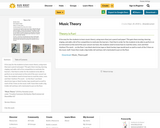
A fun way for the students to learn music theory, using more than just
a pencil and paper! This gets them moving, dancing, singing, and adds a
bit of fun competition to motivate the learners. I feel that in order
for the students to be able to perform on an instrument at the end of
the year concert we have, the students need to know how to read the
notes, rests and their rhythms!
Pre work – on the floor I use black electrician tape or black hockey
tape would work as well to mark of the 5 lines on the music staff. I
have then made a big treble clef and bass clef a laminated to put on
the floor.
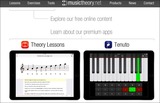
Explore music theory with this site's lessons, exercises and tools.

Students demonstrate expressive qualities of music through movement.
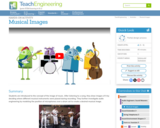
Students are introduced to the concept of the image of music. After listening to a song, they draw images of it by deciding where different musical instruments were placed during recording. They further investigate audio engineering by modeling the position of microphones over a drum set to create a desired musical image.
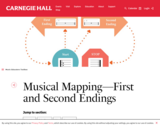
Students explore first and second endings by singing and moving.

Students identify musical form through movement.

Students wont miss a beat in this musical lesson that combines listening with personal response on a postcard.
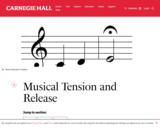
Students learn to identify tension and release within a piece of music.
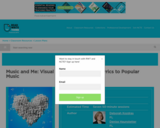
Students will whistle while they work on this lesson, creating a photomontage movie of their interpretation of a favorite song's lyrics that will end everyone's day on a high note.
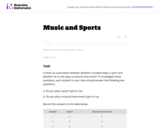
In this group task students collect data and analyze from the class to answer the question "is there an association between whether a student plays a sport and whether he or she plays a musical instrument? "

Students' understanding of how robotic touch sensors work is reinforced through a hands-on design challenge involving LEGO MINDSTORMS(TM) NXT intelligent bricks, motors and touch sensors. They learn programming skills and logic design in parallel as they program robot computers to play sounds and rotate a wheel when a touch sensor is pressed, and then produce different responses if a different touch sensor is activated. Students see first-hand how robots can take input from sensors and use it to make decisions to move as programmed, including simultaneously moving a motor and playing music. A PowerPoint® presentation and pre/post quizzes are provided.
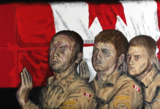
1. JOUR J : NORMANDIE 1944 (la seule ressource payante)
2. JOUR DU SOUVENIR
3. À L’ASSAUT
4. LIGNE DE RAVITAILLEMENT : TROUSSES D’EDUCATION ITINERANTES
5. LE CANADA ET LA PREMIERE GUERRE MONDIALE
6. L’HISTOIRE NAVALE DU CANADA
7. LA DEMOCRATIE EN GUERRE : LES JOURNAUX CANADIENS ET LA SECONDE GUERRE MONDIALE
8. 1812 : EXPOSITION VIRTUELLE
9. LA GUERRE DE SEPT ANS, 1754 – 1763
10. DEPECHES : DOCUMENTS D’INFORMATION SUR L’HISTOIRE MILITAIRE DU CANADA

Bienvenue au seul musée du monde consacré aux droits de la personne pour tous et toutes.
Nous visons à favoriser la compréhension, à promouvoir le respect et à encourager la réflexion.
Situé à Winnipeg, au Manitoba, le Musée canadien pour les droits de la personne est le premier musée exclusivement consacré à l’évolution des droits de la personne, à leur avenir et à leur célébration.

"Le Musée canadien de la guerre est le musée national d’histoire militaire au Canada et l’un des centres muséologiques les plus respectés au monde en ce qui a trait à l’étude et à la compréhension des conflits armés.
Les galeries d’exposition et les programmes publics du Musée ont été conçus pour mettre l’accent sur l’expérience humaine de la guerre. Les galeries sur le Canada et les conflits présentent l’histoire militaire du Canada, depuis ses débuts jusqu’à aujourd’hui, ainsi que l’importance accordée par le Canada à l’honneur et au souvenir. Chacune des galeries met en lumière les moments qui ont déterminé l’histoire militaire du Canada et les événements du passé qui ont façonné la nation."
Ce lien vous amène directement à la page pour les enseignants.
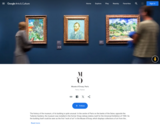
Instantly transport to the middle of Paris with the Musée d’Orsay and their online tours and art collection. Here you can explore art history with the largest collection of impressionist and post-impressionist masterpieces from renowned artists such as Monet, Renoir, Van Gogh, and many more.

Students perform an activity similar to the childhood “telephone” game in which each communication step represents a biological process related to the passage of DNA from one cell to another. This game tangibly illustrates how DNA mutations can happen over several cell generations and the effects the mutations can have on the proteins that cells need to produce. Next, students use the results from the “telephone” game (normal, substitution, deletion or insertion) to test how the mutation affects the survivability of an organism in the wild. Through simple enactments, students act as “predators” and “eat” (remove) the organism from the environment, demonstrating natural selection based on mutation.

This resource is a great activity for kids to do while they are at home with the COVID-19. The downloadable template helps them document their experience during the COVID-19 pandemic for a time capsule.